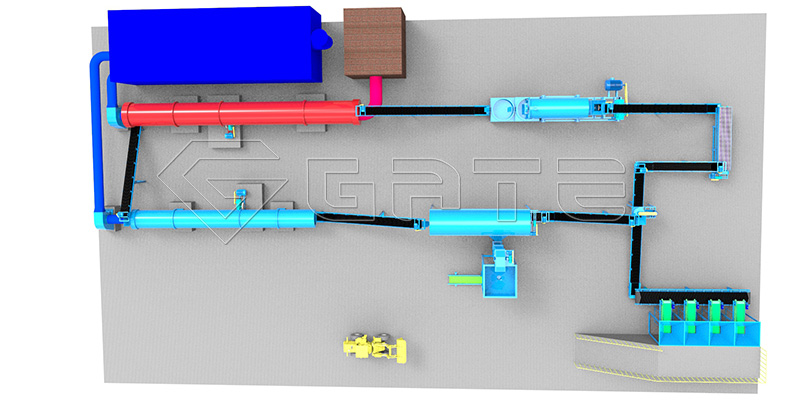Process flow of organic fertilizer equipment in wine tank fermentation
Organic fertilizer production equipment can solve the problem of environmental pollution in the wine tank. The distiller’s grains have a large acidity and a moisture content of more than 65%. They are biodegradable, highly prone to corruption, and inconvenient to store. If not treated in time, it is easy to cause great pollution to the environment. On the other hand, as the by-product of liquor production, distiller’s grains are rich in nutrients such as crude protein, crude fat, crude starch, crude fiber and nitrogen-free extract, and are rich in inorganic elements such as phosphorus and potassium, and pentose and total sugar. Ingredients are an excellent source of organic fertilizer. Organic fertilizer production equipment uses rich distiller’s grains to produce organic fertilizers, which can solve environmental problems, turn waste into treasure, and provide an organic environment for green agricultural production, with high economic, environmental and social benefits.
Process of organic fertilizer production equipment: winery distiller’s grains + fermenting bacteria + auxiliary materials (crop straw, etc.) → pre-mixing → fermentation tank → turning machine → fermentation (7-8 days of decomposing, dehydration, sterilization, deodorization) → Out of the pool → powdered organic fertilizer (or as a raw material for granulation deep processing to produce round granular organic fertilizer) → batching measurement → multi-dimensional mixing → extrusion granulation → polishing shaping (3.5-4mm spherical particles) → low temperature drying → room temperature cooling →Grade screening→finished organic fertilizer→measurement packaging

One of the widely used equipments for organic fertilizer production equipment is the disc granulator. The disc adopts an integral circular arc structure. The lining of the high-strength glass reinforced plastic disc is reinforced with a plurality of radiant steel plates. It is durable and will not be deformed and thickened. The weighted, sturdy base design eliminates the need for anchor bolts for smooth operation. The granulator of the disc granulator has three discharge ports, which facilitates intermittent production operations, greatly reduces labor intensity and improves labor efficiency. The reducer and the motor are driven by a flexible belt, which makes the starting smooth, slows the impact force and improves the service life of the equipment.

The disc granulation process has short production process, simple structure, low investment and easy operation, and is suitable for small and medium-sized enterprises. The raw materials for production are widely adaptable: nitrogen sources include urea, ammonium chloride, ammonium sulfate, and ammonium bicarbonate. Phosphorus sources are: calcium, heavy calcium, monoammonium phosphate, diammonium phosphate, calcium magnesium phosphate fertilizer. Potassium sources include potassium chloride and potassium sulfate. It can produce nitrogen, phosphorus and potassium nutrients from 20~48% inorganic compound fertilizer, organic fertilizer, organic (inorganic) compound fertilizer, bio-organic fertilizer and other products.

















Leave a Messages